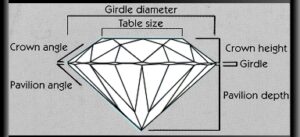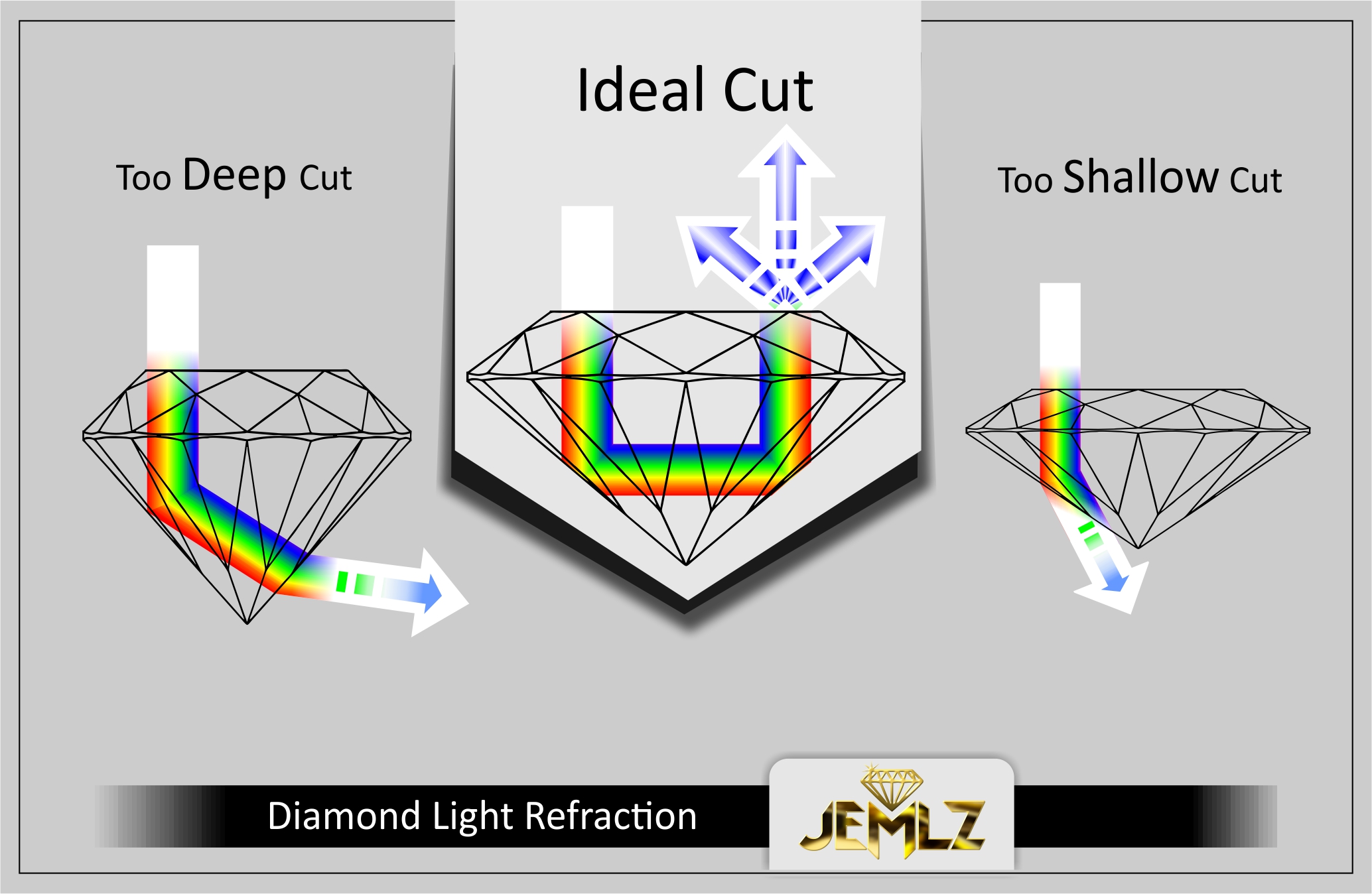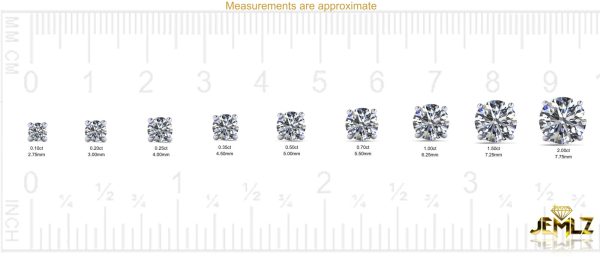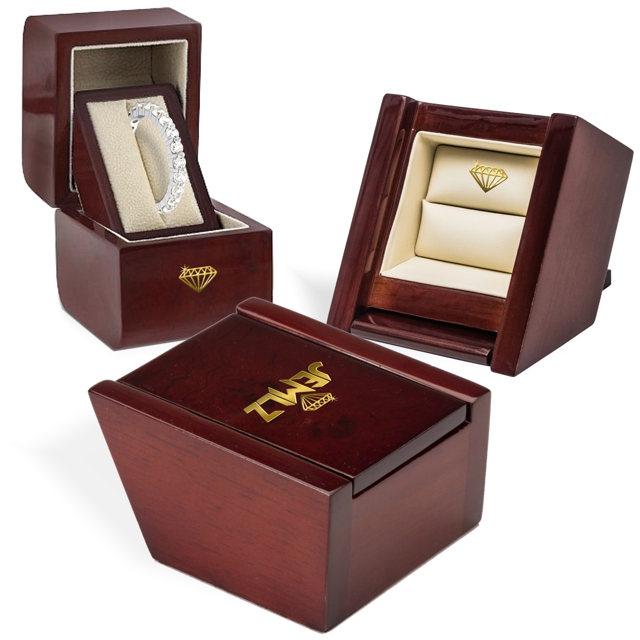
How a diamond handles light


Cut:.
Many people confuse cut with the shape of a diamond. The shape you select is a matter of individual taste, and today your choice is only limited by the skill and imagination of the craftsmen. It is their efforts during every stage of the fashioning process that reflects the maximum amount of light back to the eye. Most round, brilliant-cut or fancy-shape diamonds possess 58 carefully angled flat surfaces, called facets. It is the precision of each facet's placement that will affect the amount of fire, brilliance and ultimate beauty of your diamond.

Ideal Cut Diamonds
Ideal cut diamonds are most noticeably the best as light reflects perfectly within the diamond. Their refractive index characteristics are at their highest level distributing light which gives diamonds their best ever sparkly.
Too Deep Cut Diamonds
When a diamond is cut too deep, light hits the pavilion at a sharper angle, causing it to immediately reflect to another pavilion. The light is forced to retract and pass through the bottom of the diamond. As this happens, light is dulled and the diamond becomes less vibrant and radiant.
Too Shallow Cut Diamonds
Diamonds with a shallow cut, light will not reflect and refract properly. In addition, if a diamond has significant internal flaws that lowers the clarity grade. The sparkle may also be affected, it may still exhibit good sparkle, but the shallower the cut gets, the more light the stone loses and retains less brilliance. Shallower stones have lower quality grades and are less expensive.
Color:
The most prized diamonds are colorless diamonds, because their beauty depends entirely upon their remarkable optical properties. In such diamonds all the colors of the rainbow are reflected back to the eye. While the majority of gem diamonds appear to be colorless, others can contain increasing shades of yellow to brown, some of which are referred to as champagne diamonds. Other diamonds of exceptional color, red, blue, green, pink, and amber, are known as "Fancies." The color grading scale varies from totally colorless to light color or tinted. The difference between one grade and its neighbor is very subtle. Experts never try to remember color; they use master diamonds of known color for comparison.

Clarity:
Because of their unique optical properties, diamonds, more than any gemstone, are capable of producing maximum amount of brilliance. While minute crystals of diamond or other minerals are contained in almost all diamonds, a diamond that is virtually free of inclusions and surface markings will be judged as flawless. In these diamonds, nothing interferes with the passage of light nor spoils the beauty. But these diamonds are extremely rare and will command a high price. To determine a diamond's clarity grading, it must be examined under a 10x magnification by a trained, skilled eye. What minute inclusions there may be make every diamond unique. These are, in fact, nature's fingerprints and do not mar the diamond's beauty nor endanger its durability. Without high magnification, you may never see these inclusions. However the fewer there are, the rarer your diamond will be.

Carat-Weight:
As with all precious stones, the weight -- and therefore the size -- of a diamond is expressed in carats. One carat is divided into 100 "points" so that a diamond of 25 points is described as a quarter of a carat or 0.25 carats. Size is the most obvious factor in determining the value of a diamond, but now you know that two diamonds of equal size can have very unequal prices depending on their quality. However, remember that diamonds of high quality can be found in all size ranges.


Jemlz.com offers a wide selection of GIA certified Loose Diamonds for Sale Online at competitive prices.
Every diamond we stock are mainly Ideal Cut Diamonds.
All 100% Certified & Conflict-Free.
Our Price-Match Promise simply means we will match anyone’s price online or offline.
Every diamond we stock are mainly Ideal Cut Diamonds.
All 100% Certified & Conflict-Free.
Our Price-Match Promise simply means we will match anyone’s price online or offline.
